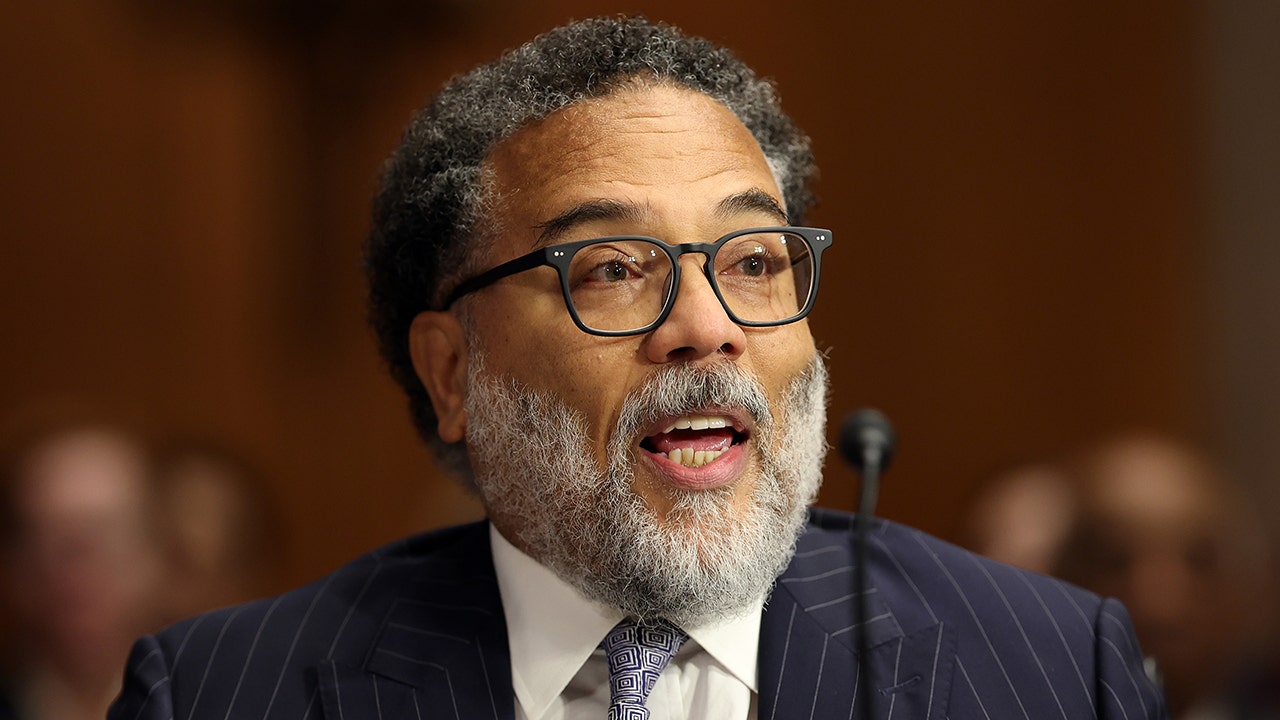Education
After Losing Their Homes, Lahaina Parents Try to Save Their School Community

The flames that ripped through Lahaina needed only a few hours to take nearly everything from Aina Kohler. Her house. Her surfing school and cafe. And her parents’ home, where she was raised.
Three weeks later, the flames are gone but they have continued to take, robbing Ms. Kohler’s 12-year-old son — and hundreds of other children — of what was supposed to be the first few weeks of the school year.
The deadly fire on Aug. 8 destroyed King Kamehameha III Elementary School in Lahaina and forced all three of the other public schools in town to close until officials determine that the air and water are safe. As of Monday, nearly 60 percent of the 3,000 public school students in Lahaina, a historic town in West Maui, had not enrolled in another public school or signed up for remote classes, essentially vanishing from the school system.
Ms. Kohler’s son, Kimo Varona, whose first day of sixth grade was supposed to be the day after the fire, still hasn’t returned to class weeks later as his family stays at a West Maui house that was offered as a refuge by a family they had never met. Kimo, whose education was already upended by Covid-19 closures, longs for some sense of normalcy with his classmates.
“The kids are having to grow up really fast right now,” said Ms. Kohler, a firefighter on Maui who helped respond to the Lahaina blaze and has turned her focus to finding an adequate school program for her son.
In recent interviews, parents and teachers said that they lived in West Maui because of the tightknit community there and that they now fear losing it if the state cannot quickly reopen schools in Lahaina.
There are no obvious solutions for families who find themselves in a situation that was unimaginable a month ago, back when students and parents were buying school supplies and getting excited about their new teachers.
Many of Lahaina’s families are staying with friends or family elsewhere on Maui, in emergency hotels on the island or in other parts of Hawaii. Some have moved to the mainland. Two Lahaina children have been confirmed dead, a 7-year-old boy and a 14-year-old boy, though officials still have not identified most of the 115 victims who are known to have died, and the ultimate death toll is believed to be higher.
For now, the Hawaii Department of Education has offered two options for Lahaina students: take the bus to schools elsewhere on Maui or enroll in a remote learning program, similar to how students learned during Covid-19 closures.
Ms. Kohler is considering signing up Kimo for remote classes but believes students should return to school in the West Maui community they know as home as soon as possible. The three other public schools in Lahaina — Princess Nahienaena Elementary School, Lahaina Intermediate School and Lahainaluna High School — remain largely intact, with only some damage from wind, debris and ash.
Ms. Kohler and many other Lahaina parents believe the focus should be on reopening those campuses and ensuring that they are safe. They do not want their children to ride the bus for 45 minutes each way on a road that they say is often closed because of car accidents or other hazards. Some also doubt the school system’s ability to run buses efficiently.
“As far as the younger kids go, we, as parents, want to keep them real close right now,” Ms. Kohler said. “They’ve been through the fire five years ago, they’ve been through Covid and now they’re going through all of our houses burning down.”
But challenges remain. Some parents fear the possible health concerns that may persist after the fire and the potential emotional strain on children who would attend schools steps away from where their town was all but destroyed and so many neighbors died.
Teachers and school employees are also struggling to stabilize their lives.
Michelle DeBaldo, a second-grade special education teacher at King Kamehameha III Elementary School, has been living in a hotel since escaping the fire, which also burned down her home and charred most of what she owned. At least 103 teachers and employees of Lahaina schools have reported that their homes burned, but all staff members are believed to have survived the fire, Keith Hayashi, the superintendent of the Hawaii public school system, said at a board meeting last week.
Teachers have been on paid administrative leave since the fire. Ms. DeBaldo said that she wanted to get back to teaching to help her students but that she did not yet have what she needed to return.
“I miss my kids. I love my job more than anything,” she said. But she added, “How am I supposed to go back to work when I don’t have clothes to work in? I lost everything.”
On Monday, Ms. DeBaldo and other Lahaina teachers met at a hotel with Education Department officials and, with many of them crying, shared their stories and criticism.
Earlier, Robert Livermore, a first-grade teacher, had organized a meeting along a beach near Lahaina to gather suggestions from parents, frustrated by a lack of information from the state.
He collected about 200 responses, and a vast majority of parents said they were interested in sending their children back to Lahaina if the schools reopened.
“King Kamehameha III is a very special school,” Mr. Livermore said. “It’s not like any other elementary school you could ever work at. We’ve got surfing lessons right outside the kindergarten windows. You’ve got the sound of the ocean in the cafeteria. It’s an amazing place.”
The future of that school, which is more than a century old, is now up in the air. Roofs have been torn off, walls scorched and windows blown out. State officials told teachers on Monday that they would establish a temporary site while they made plans for a new campus — some parents have suggested creating one in a hotel ballroom or another space in West Maui for the time being.
In a striking example of the unevenness of the fire’s consequences, in the aftermath of the fire Kimo’s twin sister received a coveted spot at the private Maui Preparatory Academy — 20 minutes north of the burn zone — and quickly returned to school.
But Kimo was not admitted to the school. More than 700 students had applied for admission after the fire, but Maui Prep said it had space for only about 140 of them.
Reuben Pali, who grew up in Lahaina and runs after-school music classes for students, feared that sending children to schools elsewhere on the island — what many on Maui call “the other side” — could exacerbate the loss of community in Lahaina. He noted that many Hawaiians had already left Maui in recent years because they were priced out.
“We’re a tight, small little community,” he said, “and being dispersed is like dispersing a family.”

Education
Video: Several Killed in Wisconsin School Shooting, Including Juvenile Suspect

new video loaded: Several Killed in Wisconsin School Shooting, Including Juvenile Suspect
transcript
transcript
Several Killed in Wisconsin School Shooting, Including Juvenile Suspect
The police responded to a shooting at a private Christian school in Madison, Wis., on Monday.
-
Around 10:57 a.m., our officers were responding to a call of an active shooter at the Abundant Life Christian School here in Madison. When officers arrived, they found multiple victims suffering from gunshot wounds. Officers located a juvenile who they believe was responsible for this deceased in the building. I’m feeling a little dismayed now, so close to Christmas. Every child, every person in that building is a victim and will be a victim forever. These types of trauma don’t just go away.
Recent episodes in Guns & Gun Violence
Education
Video: Biden Apologizes for U.S. Mistreatment of Native American Children

new video loaded: Biden Apologizes for U.S. Mistreatment of Native American Children
transcript
transcript
Biden Apologizes for U.S. Mistreatment of Native American Children
President Biden offered a formal apology on Friday on behalf of the U.S. government for the abuse of Native American children from the early 1800s to the late 1960s.
-
The Federal government has never, never formally apologized for what happened until today. I formally apologize. It’s long, long, long overdue. Quite frankly, there’s no excuse that this apology took 50 years to make. I know no apology can or will make up for what was lost during the darkness of the federal boarding school policy. But today, we’re finally moving forward into the light.
Recent episodes in Politics
Education
Video: Los Angeles Bus Hijacked at Gunpoint

new video loaded: Los Angeles Bus Hijacked at Gunpoint
transcript
transcript
Los Angeles Bus Hijacked at Gunpoint
The person suspected of hijacking a bus which killed one person, was taken into custody after an hourlong pursuit by the Los Angeles Police Department early Wednesday morning.
-
“Get him.”
Recent episodes in Guns & Gun Violence
-

 Business7 days ago
Business7 days agoThese are the top 7 issues facing the struggling restaurant industry in 2025
-

 Culture7 days ago
Culture7 days agoThe 25 worst losses in college football history, including Baylor’s 2024 entry at Colorado
-

 Sports6 days ago
Sports6 days agoThe top out-of-contract players available as free transfers: Kimmich, De Bruyne, Van Dijk…
-

 Politics5 days ago
Politics5 days agoNew Orleans attacker had 'remote detonator' for explosives in French Quarter, Biden says
-

 Politics5 days ago
Politics5 days agoCarter's judicial picks reshaped the federal bench across the country
-

 Politics3 days ago
Politics3 days agoWho Are the Recipients of the Presidential Medal of Freedom?
-

 Health2 days ago
Health2 days agoOzempic ‘microdosing’ is the new weight-loss trend: Should you try it?
-

 World7 days ago
World7 days agoIvory Coast says French troops to leave country after decades














